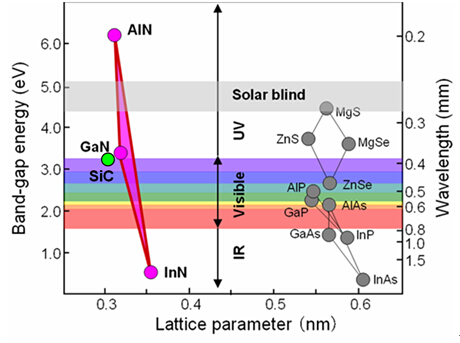

Currently, based on the bandgap energy of semiconductor materials used, semiconductor UV sensors can be divided into two major categories: one is photodiode made with conventional semiconductor materials (such as Si, GaAs and InP), while the other is photodiode made with wide-bandgap semiconductors (such as GaN and SiC). The former category has already been technically mature. Nevertheless, since the bandgap of the semiconductor used is relatively narrow, the peak response of the corresponding sensors is usually within the visible wavelength region. Therefore, to make these sensors selectively work in UV wavelength region, additional optical filters have to be added, which are specially designed and very expensive. Since the intensity of visible light of solar radiation reaching the ground is over 104 times stronger that of UV light, the aforementioned filter requires a high rejection ratio, and is thus very difficult to manufacture. Besides, while filtering out the high-intensity visible light, the filter would also filter out a considerable amount of UV light to be detected, resulting in a greatly reduced quantum efficiency of the UV sensing system. In comparison, the photodiode technology based on wide-bandgap semiconductors developed by GaNo Optoelectronics can effectively solve the above problem.

